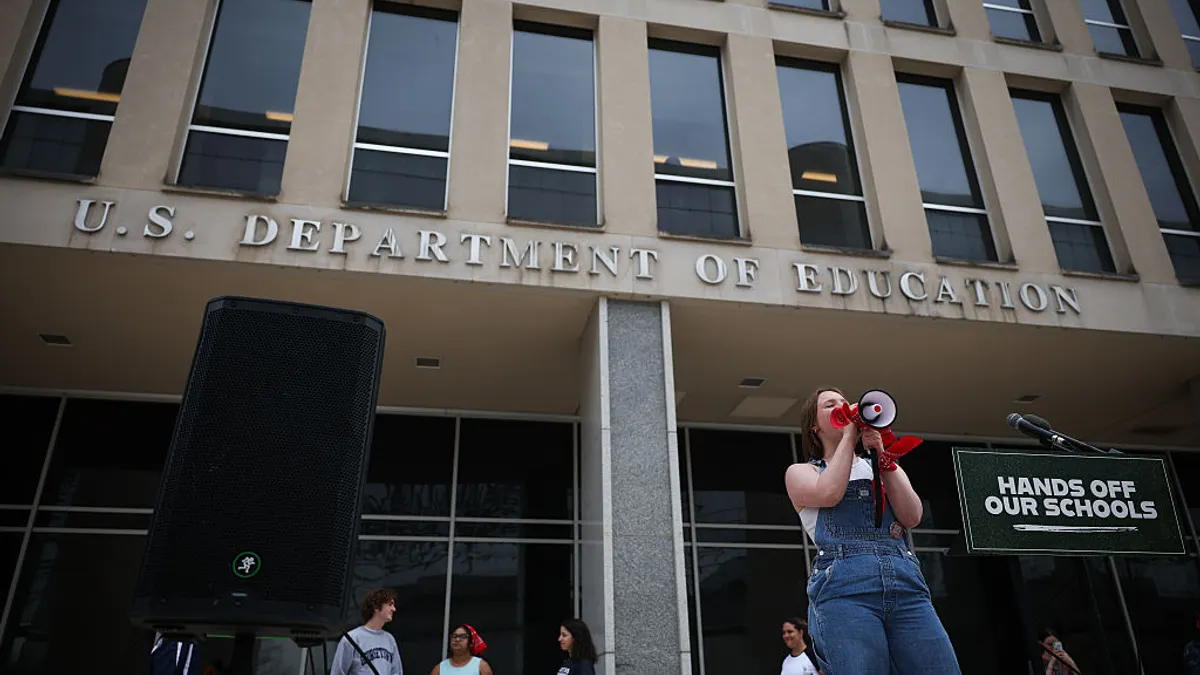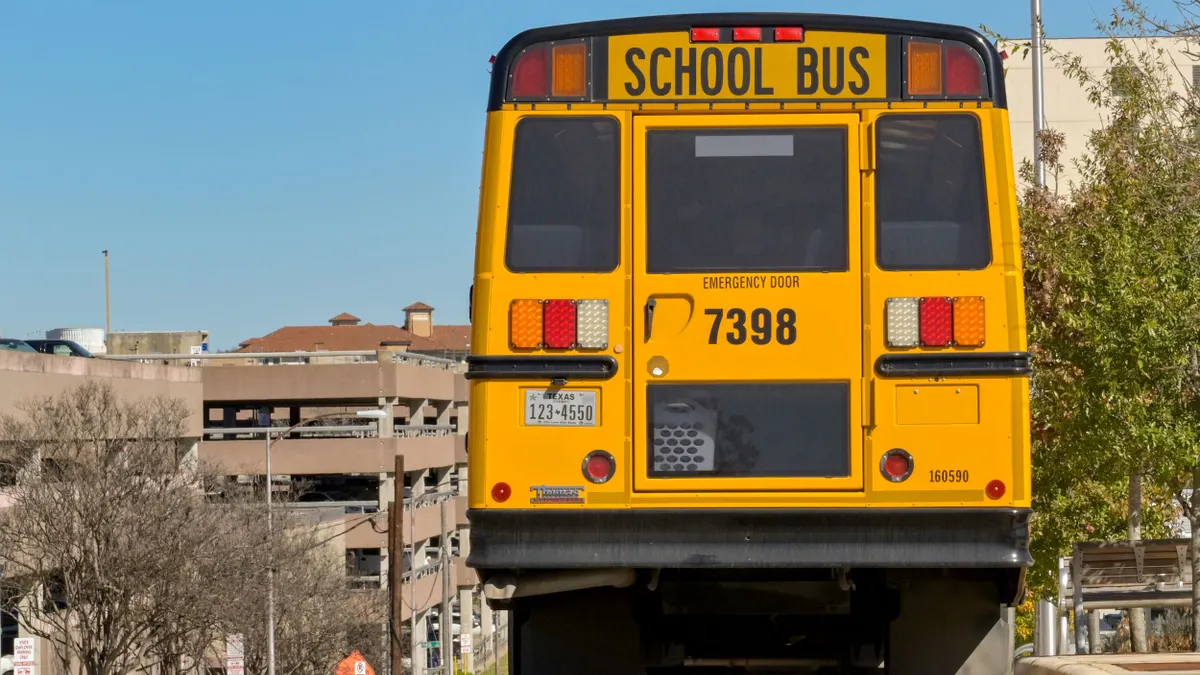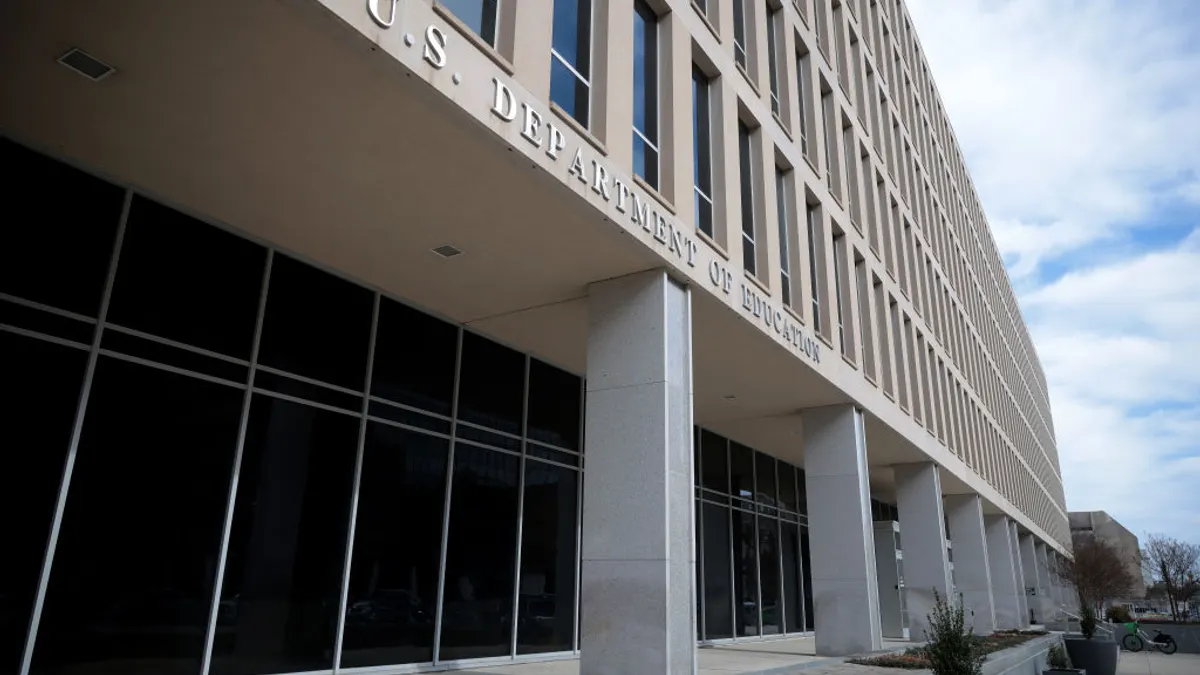The Trump administration's decision to gut federal programs administered by the U.S. Department of Education and lay off half of the agency's staff in an attempt to increase its efficiency has been met with resistance from lawmakers and, most recently, a federal judge whose court order brought efforts to close the department to an abrupt halt.
In an update required by a May 22 court order, the Education Department posted on its website that it has notified its employees of the court-ordered reversal of the reduction in force that left the agency with only about 2,183 out of 4,133 employees. The department on May 27 acknowledged its being compelled by the order in State of New York v. McMahon "to restore the Department to the status quo such that it is able to carry out its statutory functions."
Last week, U.S. District Judge Myong Joun, in temporarily reversing the reduction in force, said gutting the department would lead to "irreparable harm that will result from financial uncertainty and delay, impeded access to vital knowledge on which students and educators rely, and loss of essential services for America’s most vulnerable student populations."
“This court cannot be asked to cover its eyes while the Department’s employees are continuously fired and units are transferred out until the Department becomes a shell of itself," Joun said in his decision.
Delays in distributing grant funds
The decision came on the heels of a May 16 letter sent by Democratic lawmakers to U.S. Education Secretary Linda McMahon. They claimed the Education Department was delayed in distributing grant funding — including allocations under Title I — for the 2025-26 school year. The delay gives states and districts less time to allocate funds meant to help students experiencing homelessness and other underserved students the grants are meant to help, they said.
"States and school districts are best able to plan to most effectively use federal funds with advance knowledge of expected funding, as Congress intends by providing funds on a forward-funded basis," said Sen. Patty Murray of Washington, Sen. Tammy Baldwin of Wisconsin, and Rep. Rosa DeLauro of Connecticut in the letter.
Murray is vice chair of the Senate Committee on Appropriations, of which Baldwin is also a member. DeLauro is ranking member of the House Appropriations Committee.
"We believe you need to immediately change course and work in partnership with states and school districts to help them effectively use federal funds," the lawmakers wrote in their reprimand of the department's delay.
By the lawmakers’ count, the department took three times as long under this administration to distribute Title I-A grants than under the Biden administration. Whereas the former administration took two weeks to distribute the funds after the appropriate law was signed in 2024, the current administration took more than 50 days after the enactment of the 2025 appropriations law to distribute Title I-A funds. The program provides $18.4 billion by formula to more than 80% of the nation’s school districts.
The department also delayed applications for the Rural Education Achievement Program, which funds more than 6,000 rural school districts. The department opened applications to REAP's Small, Rural Schools Assistance program nearly two months later than the Biden administration, and gave districts half the time to apply — just 30 days compared to 60 in FY 2024.
AASA, The School Superintendents Association, said it was aware of this delay. "We understand this release date is significantly later than usual coupled with a shortened application window, so it is important to ensure all eligible districts are aware of this change," the association said in a May 7 post, prior to the application's release on May 14. The deadline for program applications is June 13.
These delays in funding distribution and last week's letter from Democrats come as the department bumped funding for charter schools by $60 million this month.
In April, the department also abruptly canceled billions in federal pandemic aid reimbursements for COVID-19 spending, a move that was met with pushback from Democratic lawmakers and states. Sixteen states and the District of Columbia sued for access to the funds and scored a victory earlier this month when a judge ordered a temporary reversal of the administration's cancellation as the litigation is pending.
The lawmakers blasted the department's reduction in force — which gutted the department of half of its employees — as the culprit behind the delays. "We were told your Department’s work would be efficient, particularly after the reduction in force in which you reduced half of the Department’s workforce, but that does not appear to be the case here," the lawmakers wrote in their letter.
Following the layoffs, education policy experts worried the department's efforts to prevent waste, fraud and abuse by eliminating key federal programs and employees would backfire, as a reduced workforce could lead to less oversight and delayed support for states and districts.
However, the department has repeatedly said its decision to push out nearly 1,900 employees would not impact its ability to deliver on its responsibilities required by law.
The U.S. Department of Education did not respond to K-12 Dive's request for comment. However, it has said it plans to appeal the May 22 court order temporarily blocking the agency from downsizing the department.





















